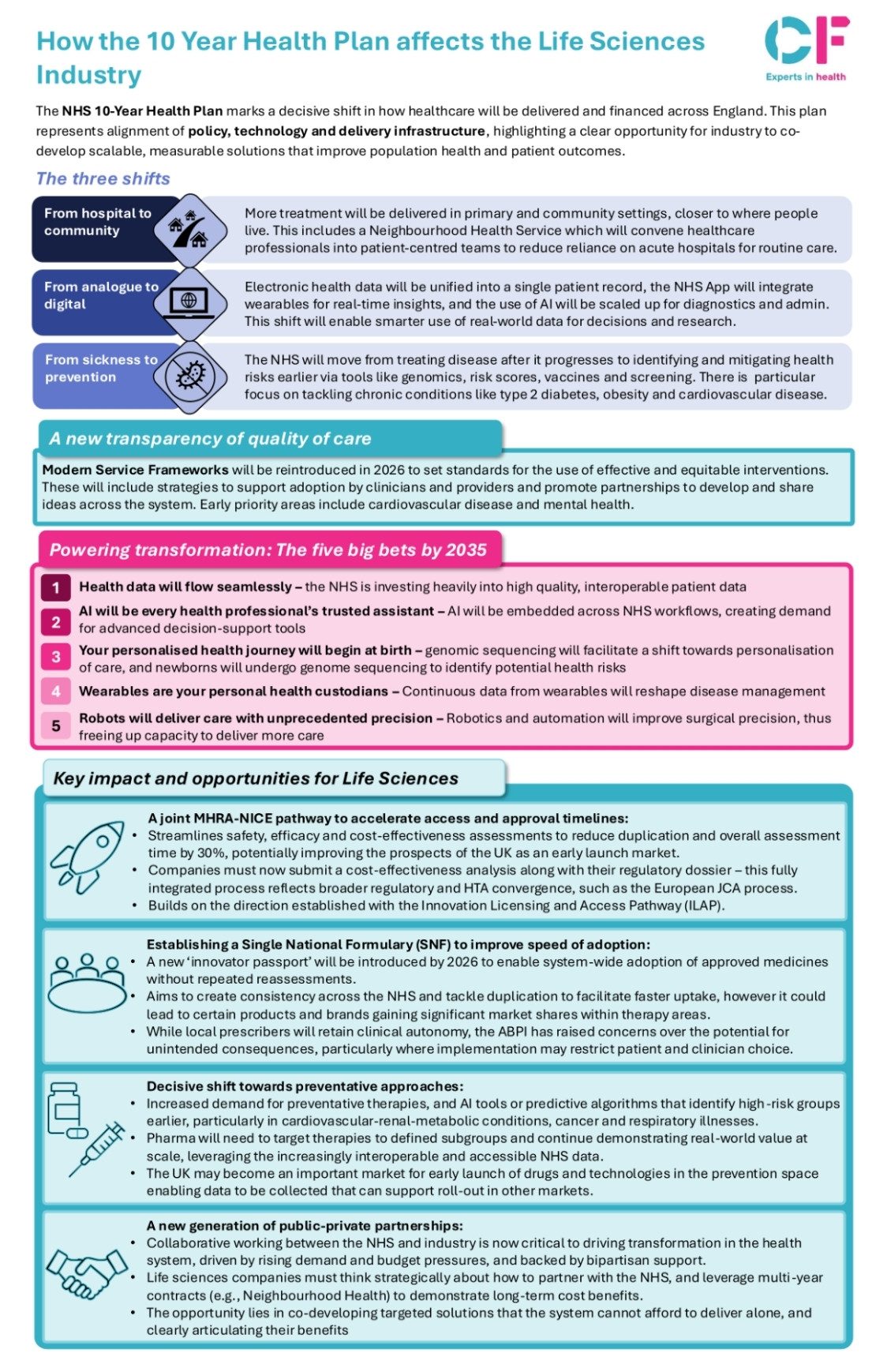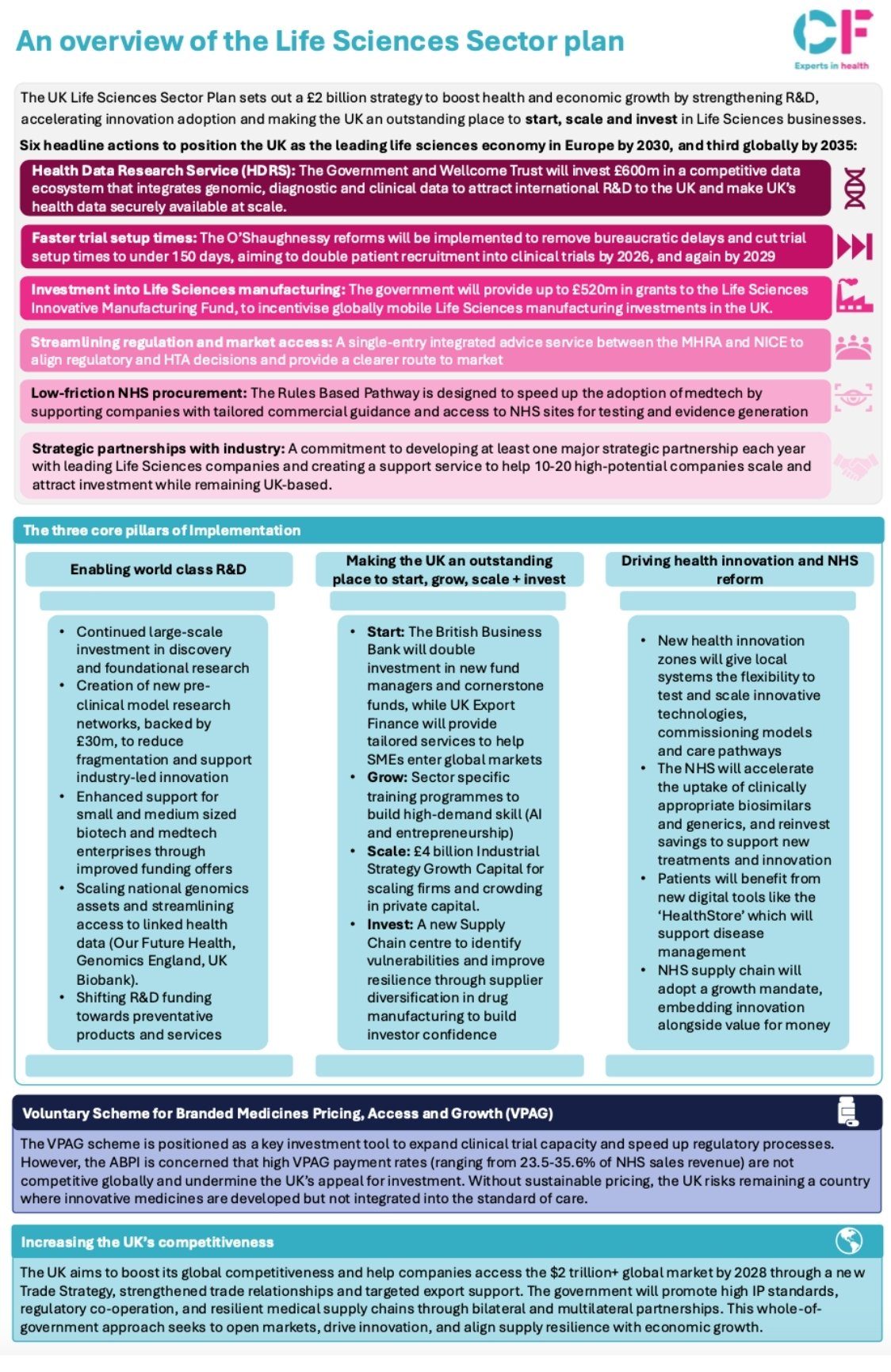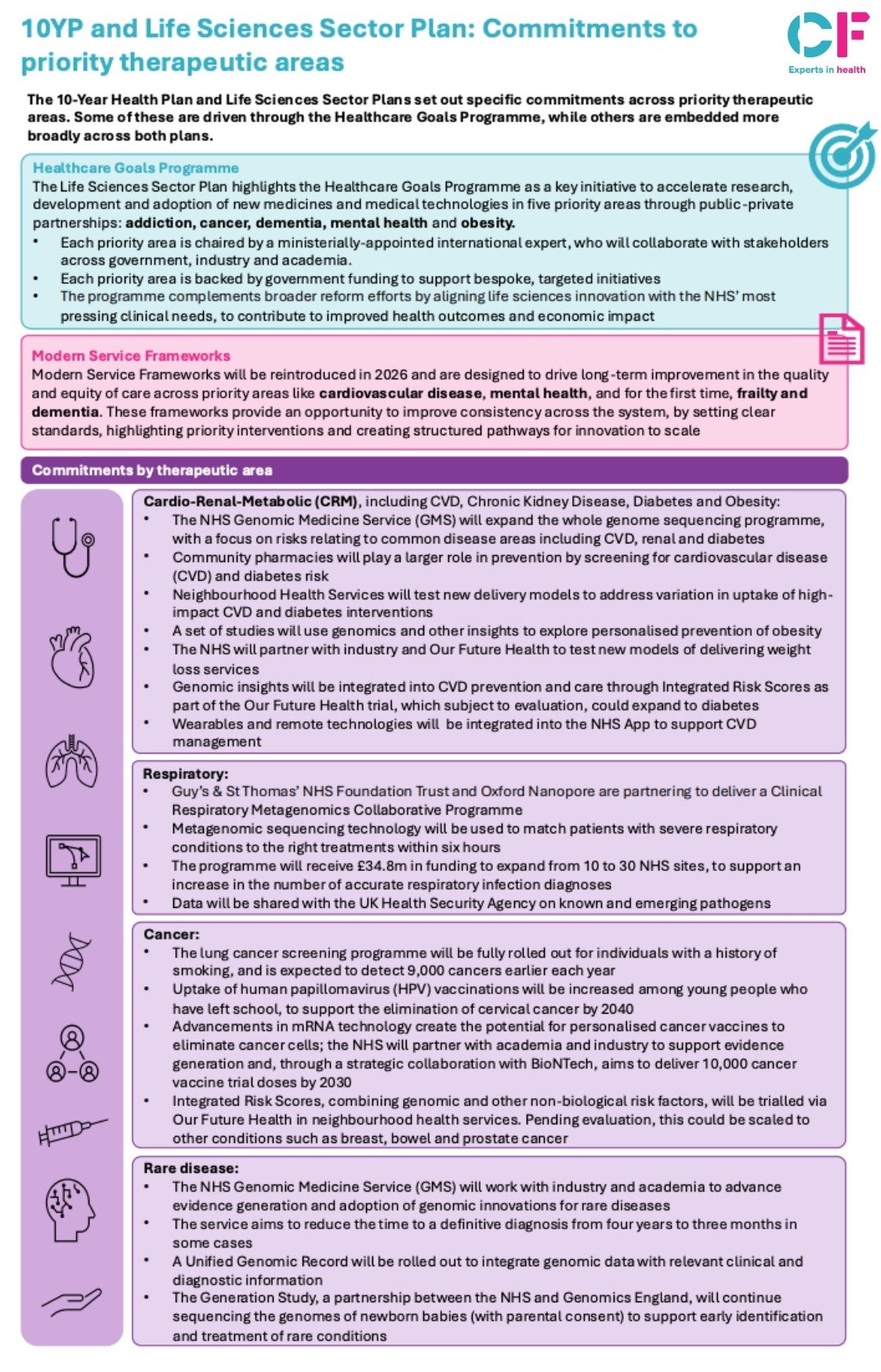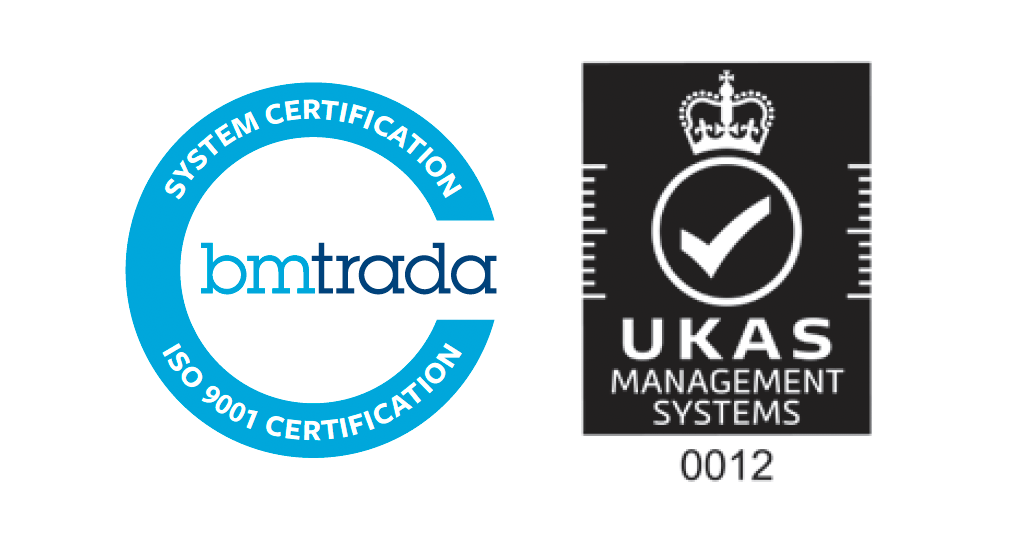The 10-Year Health Plan (10YP) and Life Sciences Sector Plan together set out a transformation proposition for both the NHS and life sciences industry. However, challenges regarding the Voluntary Scheme for Branded Medicines Pricing and Access (VPAG) remain, particularly due to the lack of movement on payment rates. Industry signed up to this scheme with the expectation that rates would fall over time, however the £3.4bn payment to be made this year exceeds the total from 2014-2018.
As part of our snapshot series, we have summarised the key takeaways from both plans for the life sciences sector, including the specific commitments made in priority therapeutic areas.
The 10YP and Life Sciences Sector plan overview
The 10YP acknowledges the reality that patients and staff experience every day, an NHS under strain with long waiting lists, widening inequalities and outcomes that lags behind international peers. The government’s response is to build transformation around three fundamental shifts: From analogue to digital, sickness to prevention and hospital to community.
In parallel, the Life Sciences Sector Plan sets an ambition that by 2030, the UK will be Europe’s leading life sciences economy, backed by more than £2 billion in funding. It commits to removing systemic barriers, from slow clinical trial setup and duplication of regulatory processes to inconsistent adoption across the health system.
Taken together, these reforms present a triple opportunity:
- For patients – earlier diagnosis, personalised care and faster access to innovation
- For the NHS – a pathway to sustainability, with data and digital tools to drive productivity and prevention
- For industry – the chance to align with a health system that is ready to adopt at scale, forging long-term partnerships that deliver measurable impact
Key implications for life sciences
🧠 Across almost every priority, genomic tools, AI-enabled risk scoring and real-world data are emerging as key enablers.
🫀The NHS will scale prevention and personalised care for CRM conditions (include CVD, diabetes, CKD, obesity) through integrated risk scoring, wearables and new delivery models, including through partnerships with Our Future Health.
🫁 A major genomics-driven respiratory programme will accelerate accurate diagnosis and treatment within six hours.
💉New screening, vaccination and mRNA technologies will enable earlier detection and personalised cancer vaccines.
🧬 The NHS will expand whole genome sequencing and unify genomic records to drastically cut diagnosis times and enable earlier intervention for rare conditions.
Key commitments made
Several commitments have been made throughout the two plans, including:
- Delivering the £520 million Life Sciences Innovative Manufacturing Fund (LSIMF).
- The Life Sciences Large Investment Portfolio – This new, tailored approach will play a key role in accelerating the government’s drive to enhance the UK’s global competitiveness and will back investments exceeding £250 million.
- Backed by £34.8 million from the Department for Science, Innovation and Technology (DSIT), the programme will scale up from 10 to 30 NHS sites, enhancing the accurate diagnosis of respiratory infections and supplying vital data on known and emerging pathogens to the UK Health Security Agency.
- BioNTech has pledged to expand its R&D operations in the UK, with plans to invest up to £1 billion over the next decade and generate hundreds of highly skilled jobs.
- By 2030, Genomics England — backed by over £650 million in government funding — will host one of the world’s largest genomic research databases, containing more than 500,000 genomes.
- UK Biobank will strengthen the impact of its leading biomedical research resource by further enhancing participant data. Supported by up to £20 million in government funding, this expansion will include proteomic analysis of all 500,000 participants, alongside other multiomic data.
- The Government, alongside the Wellcome Trust, will invest up to £600 million to establish a new HDRS.








